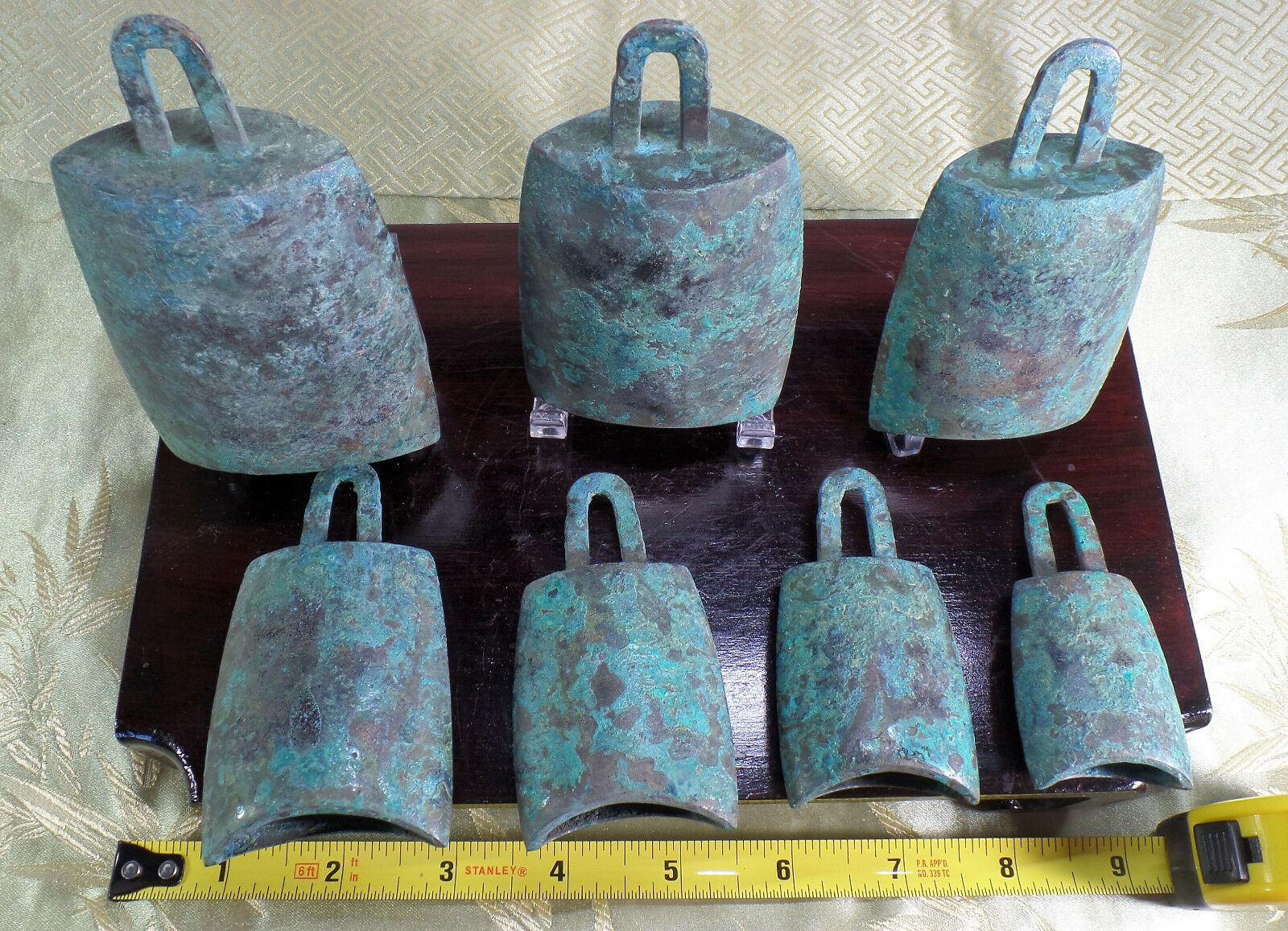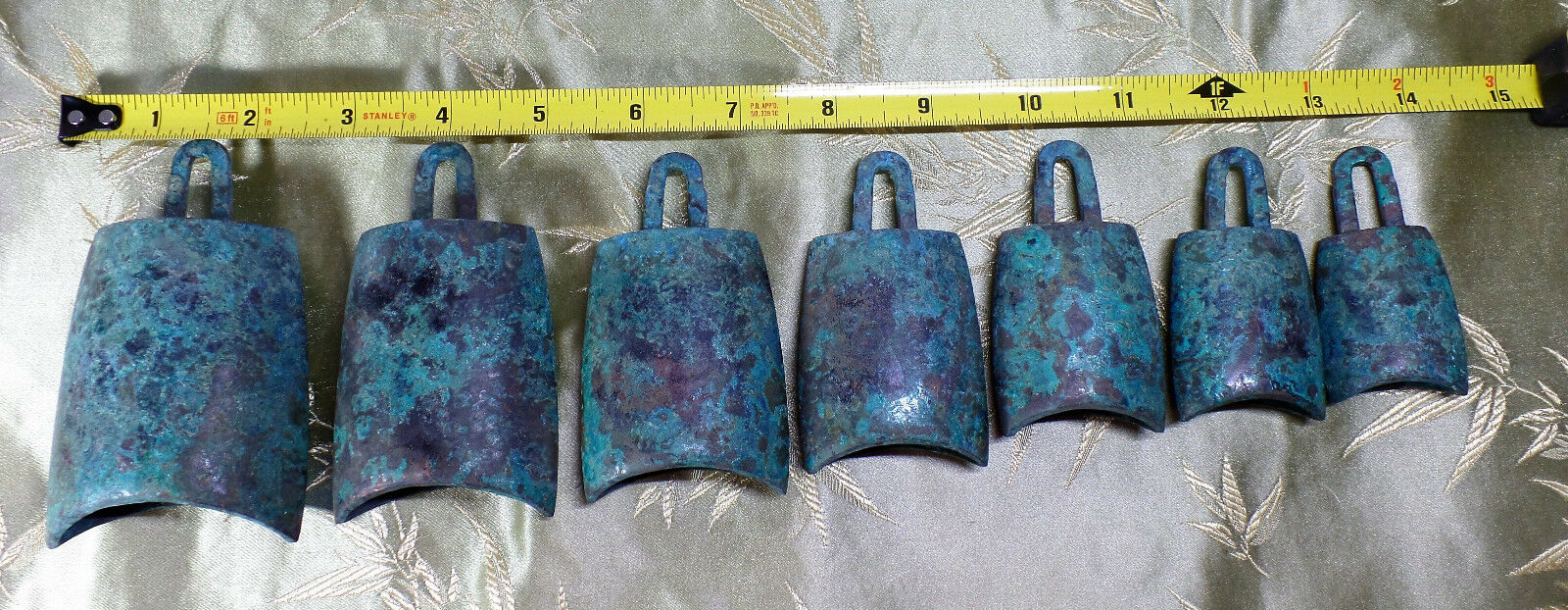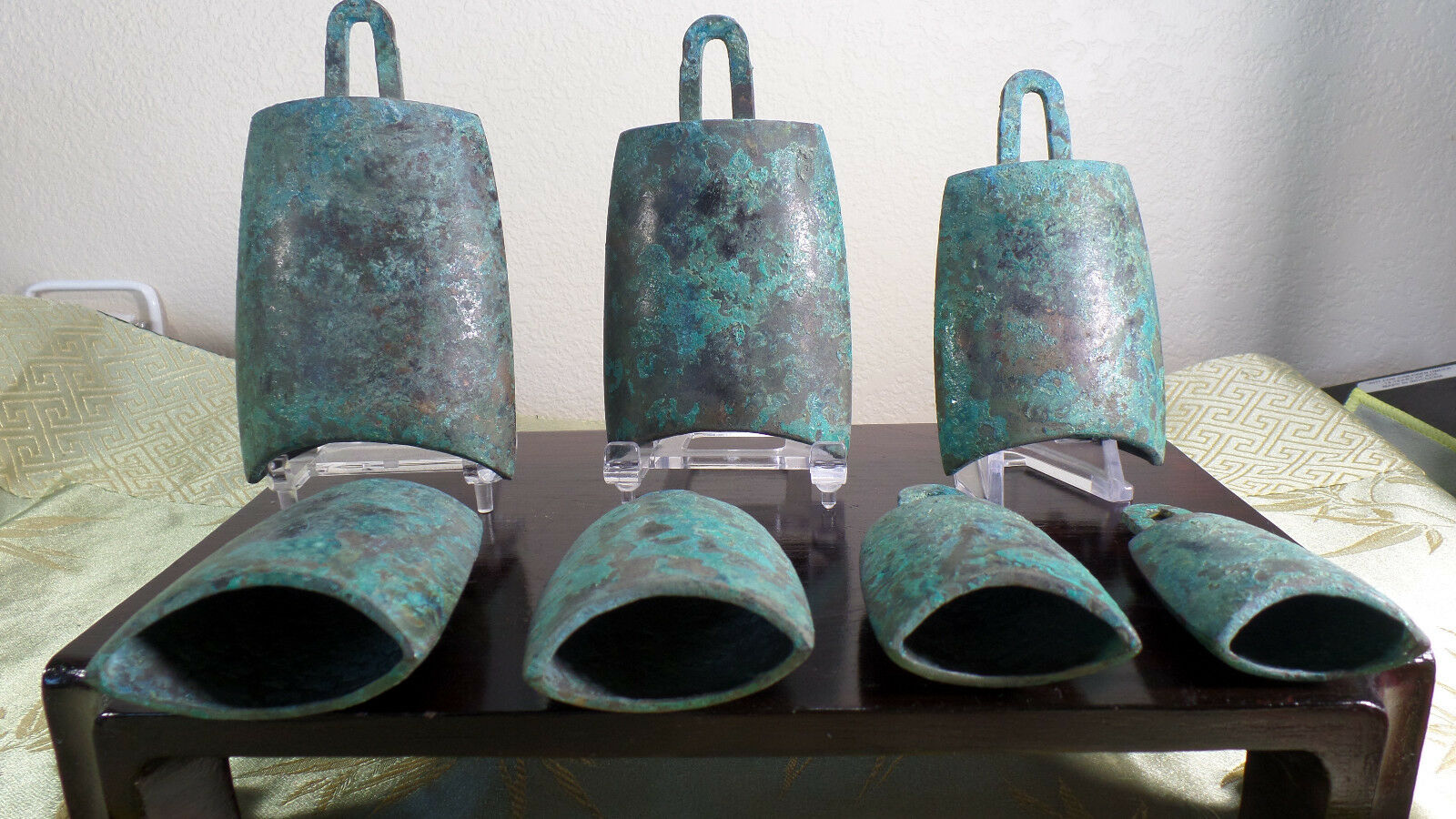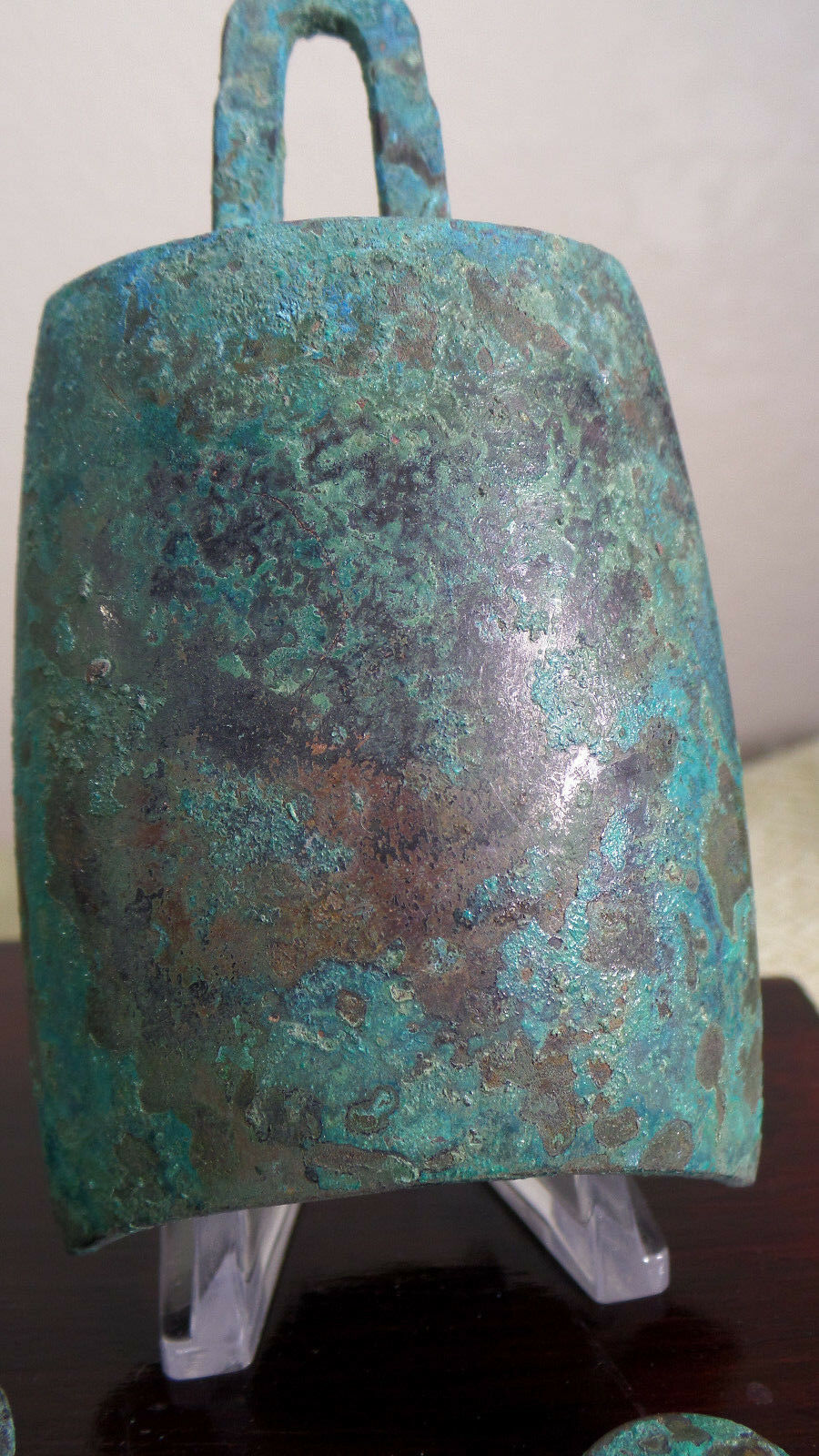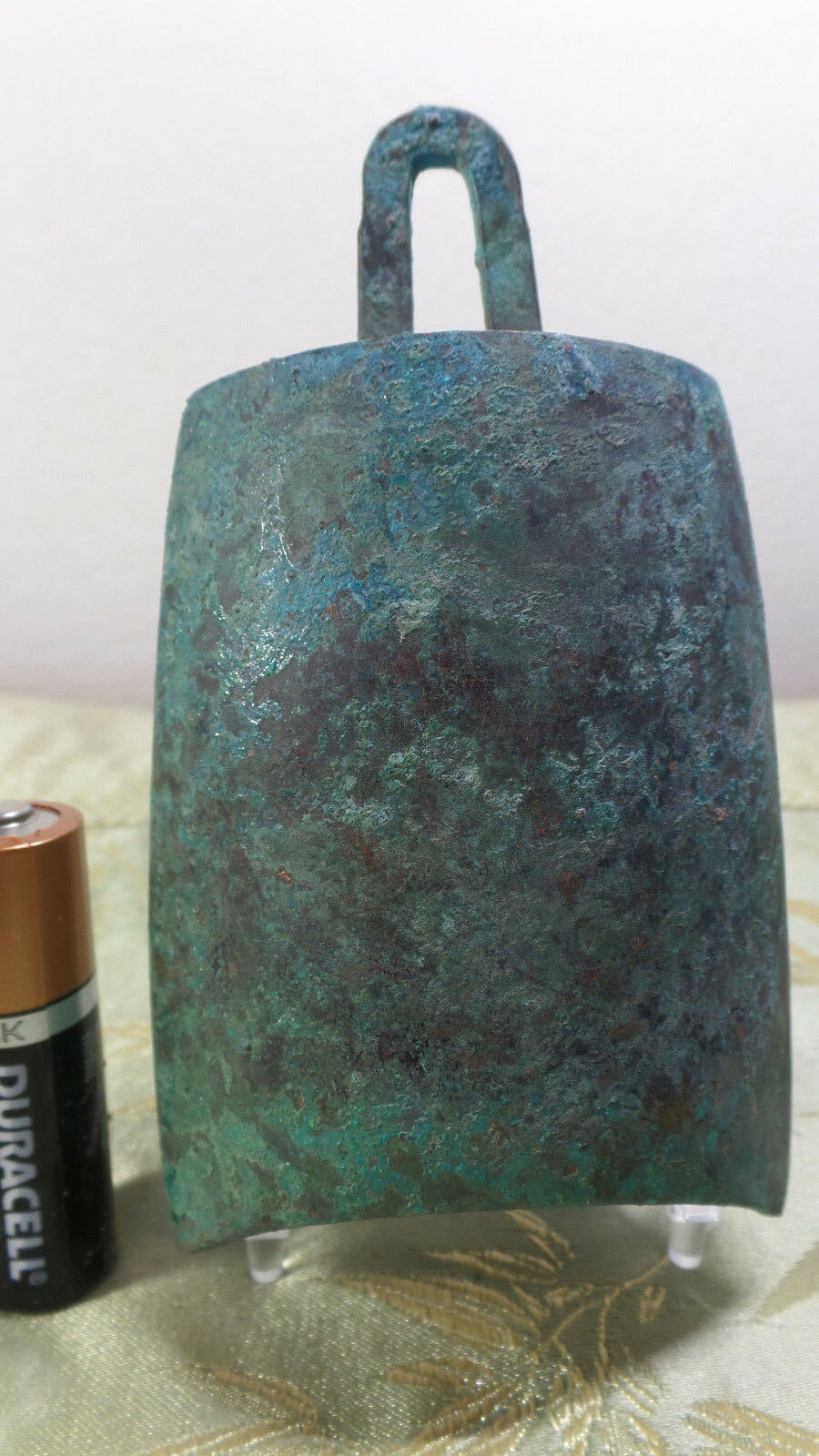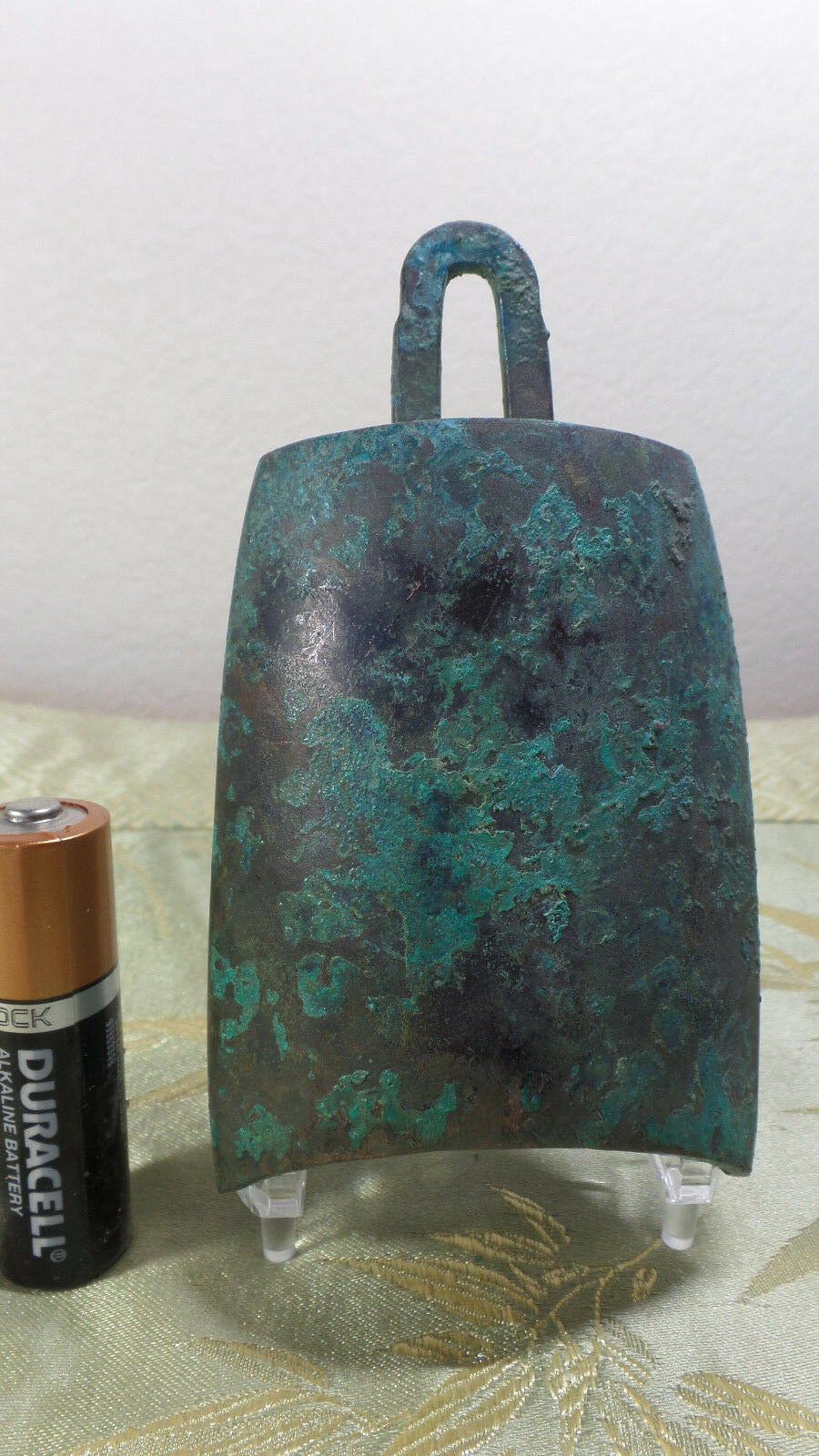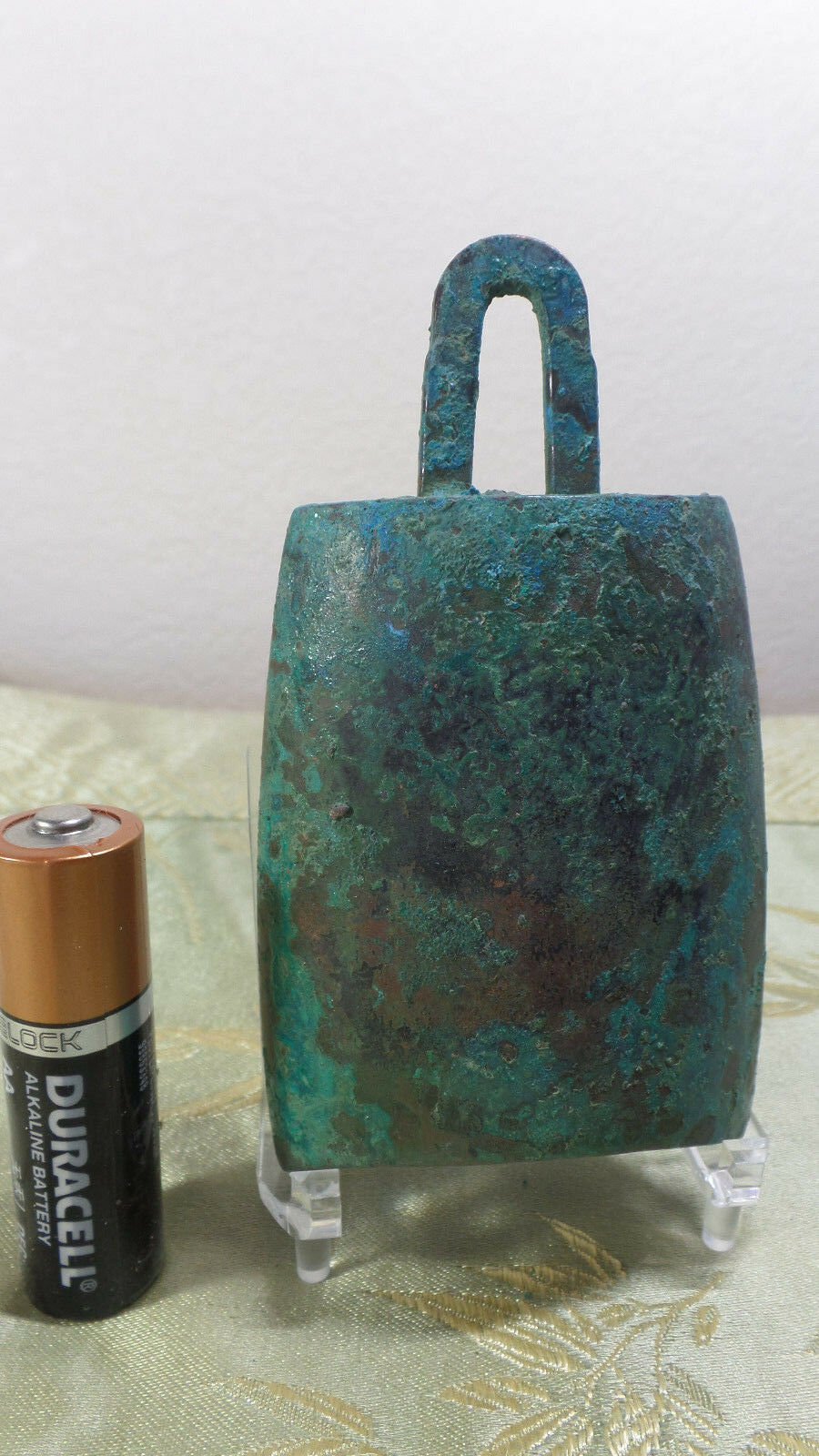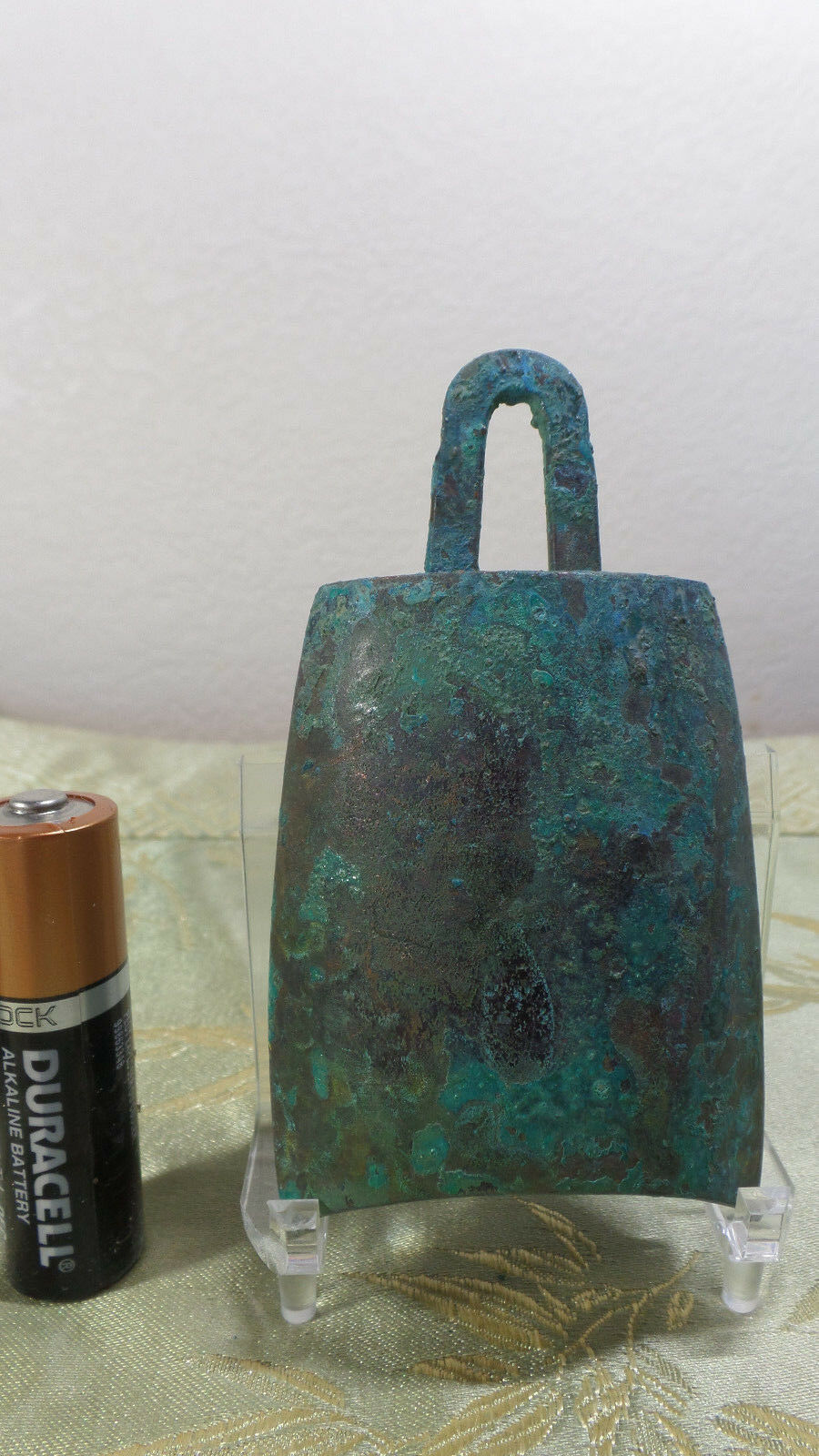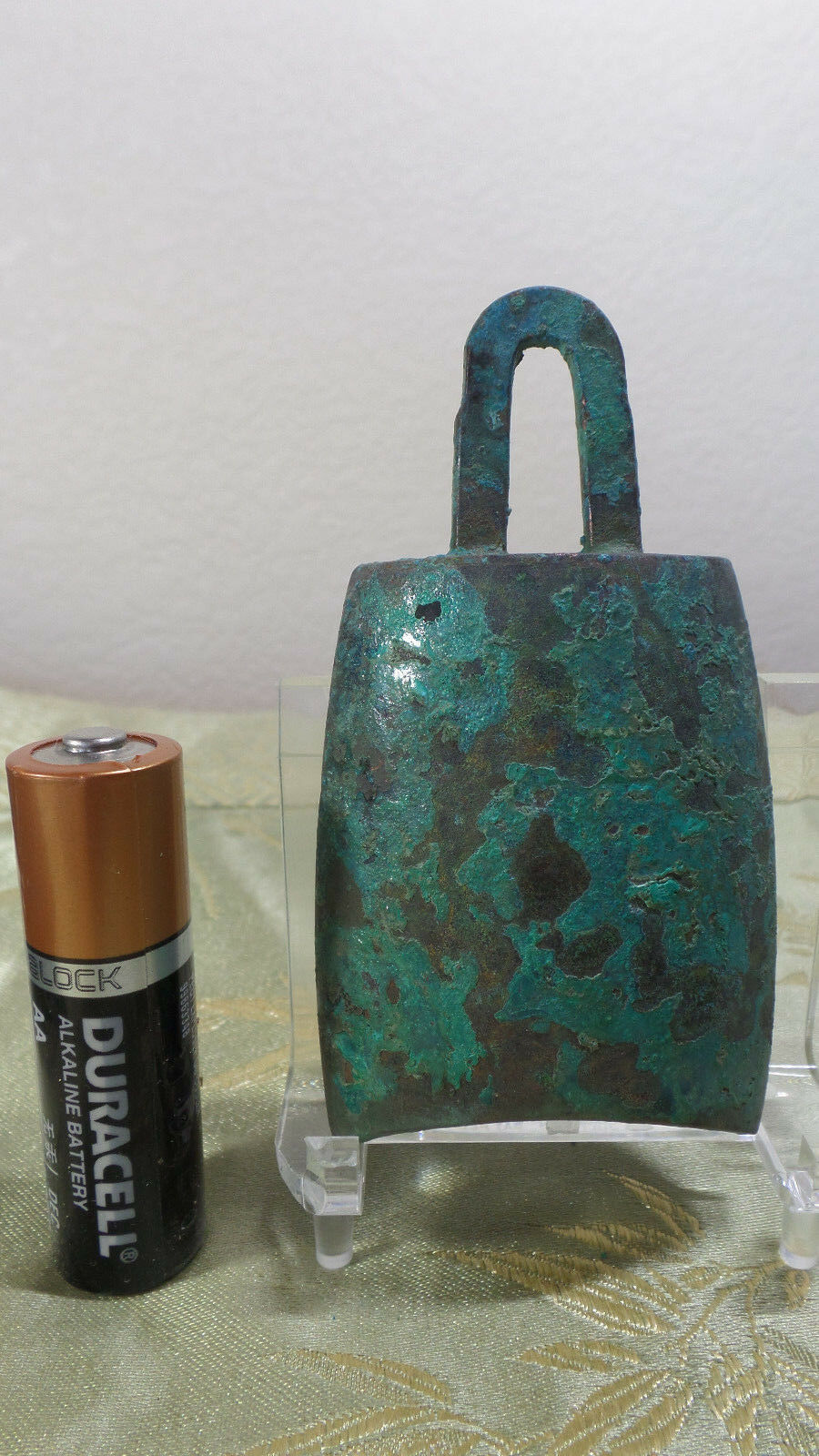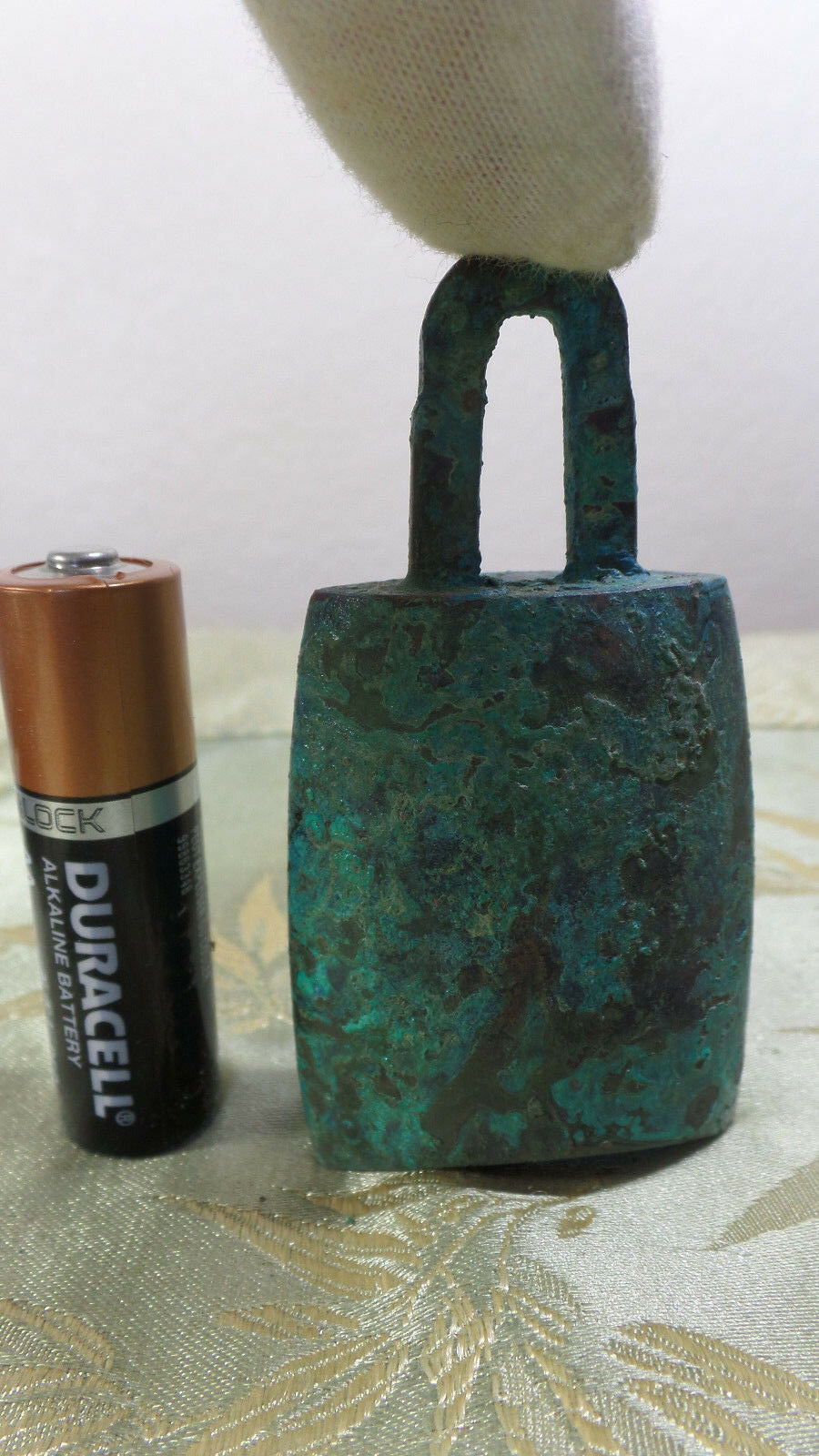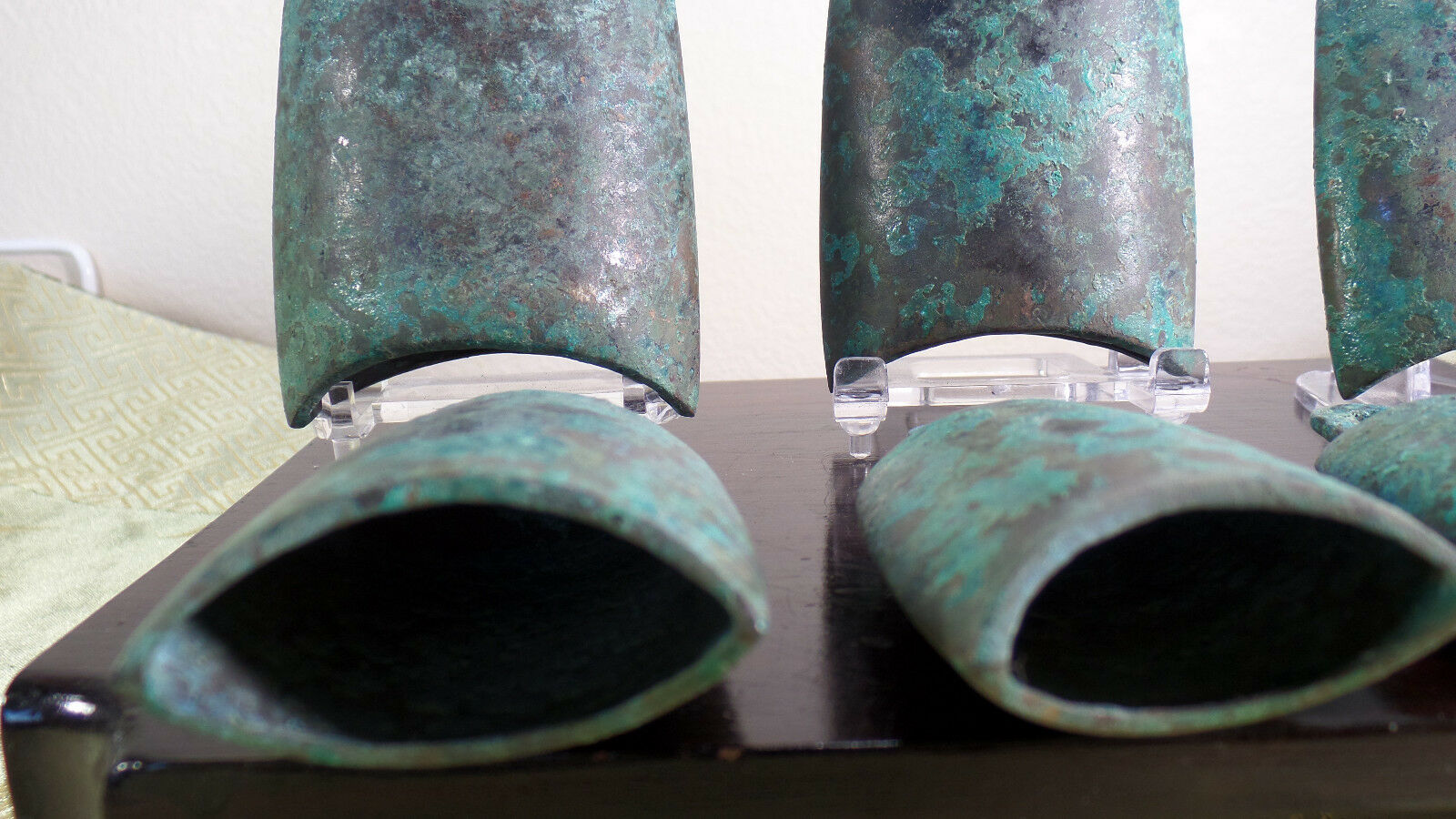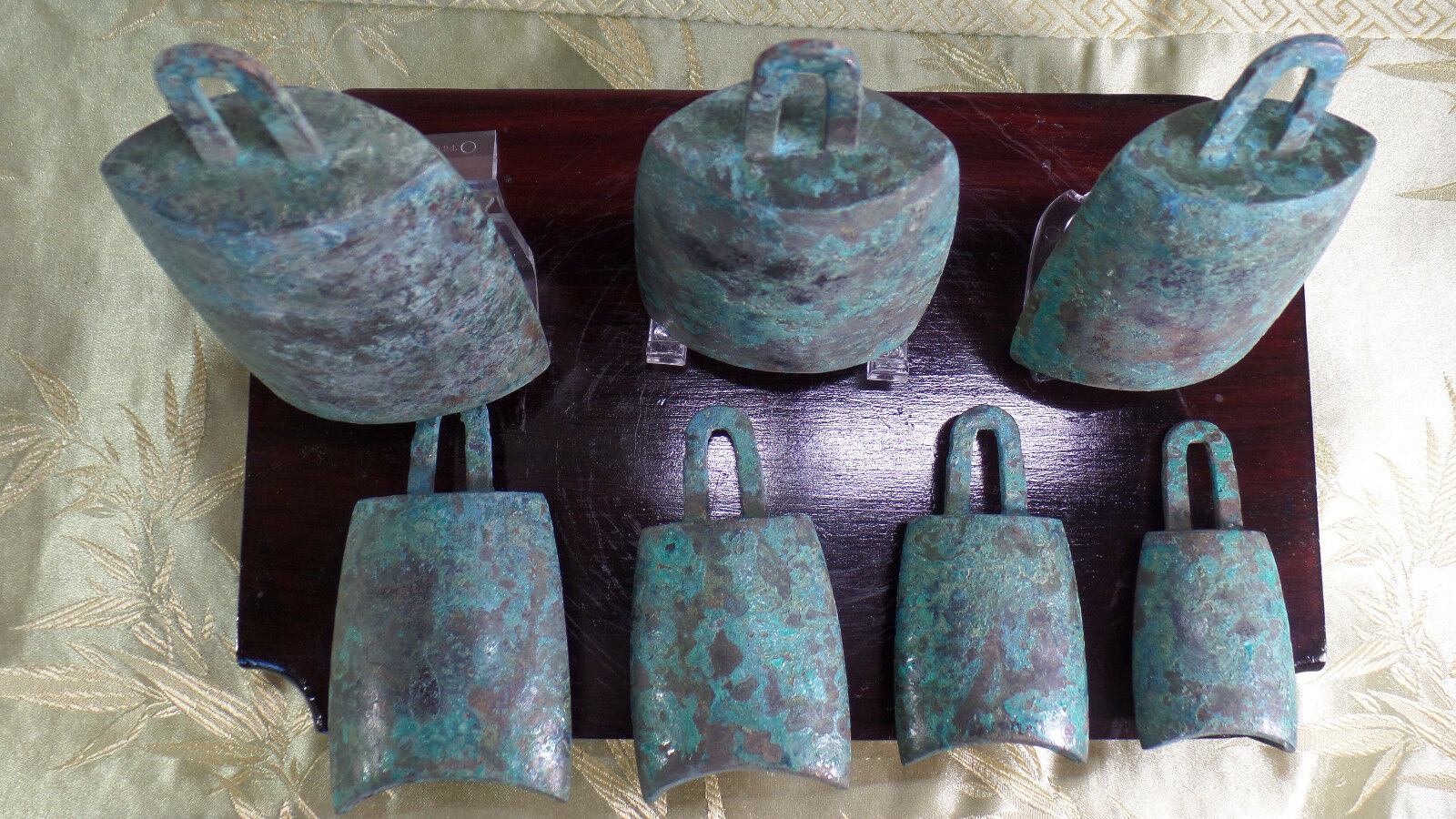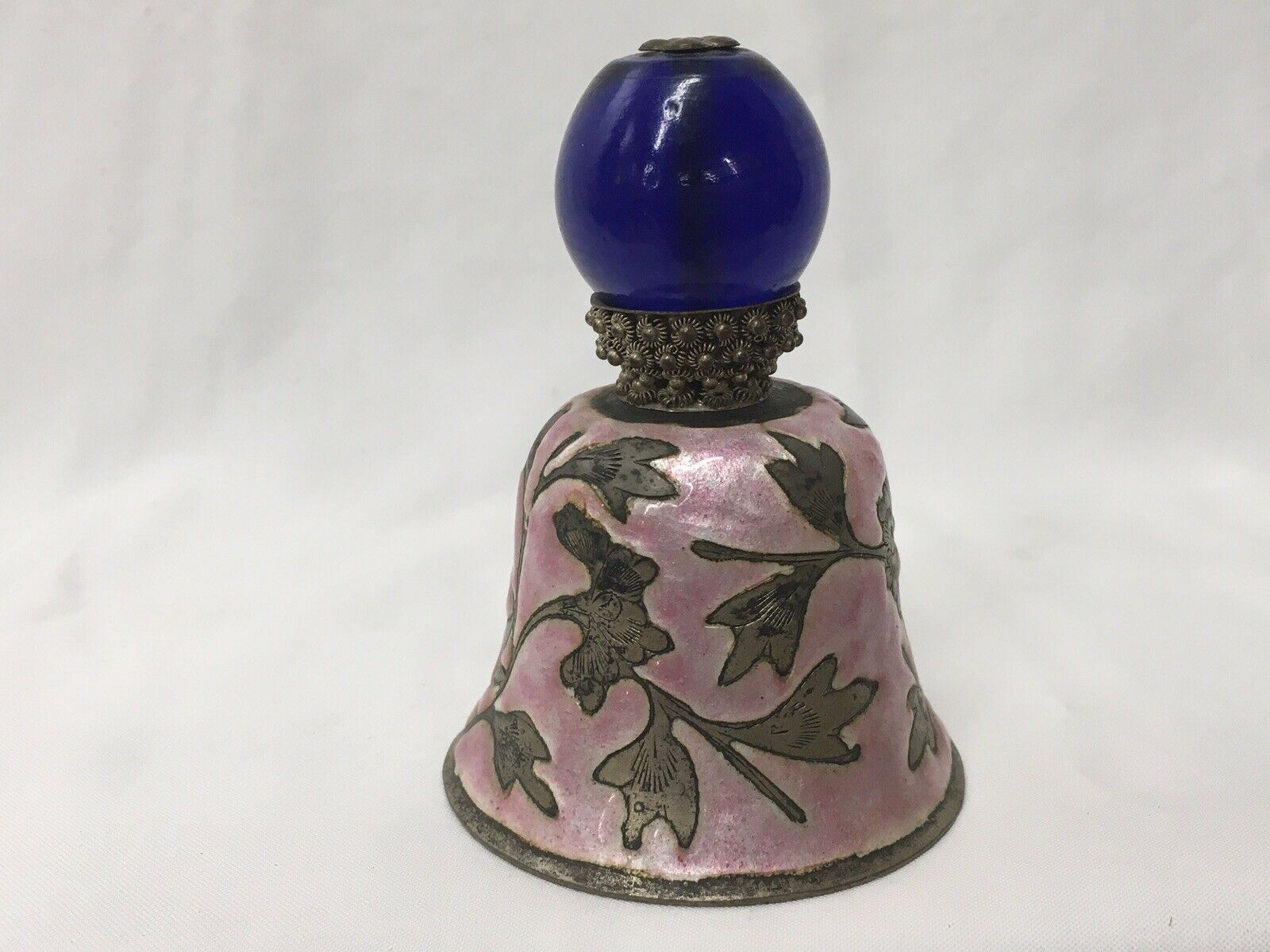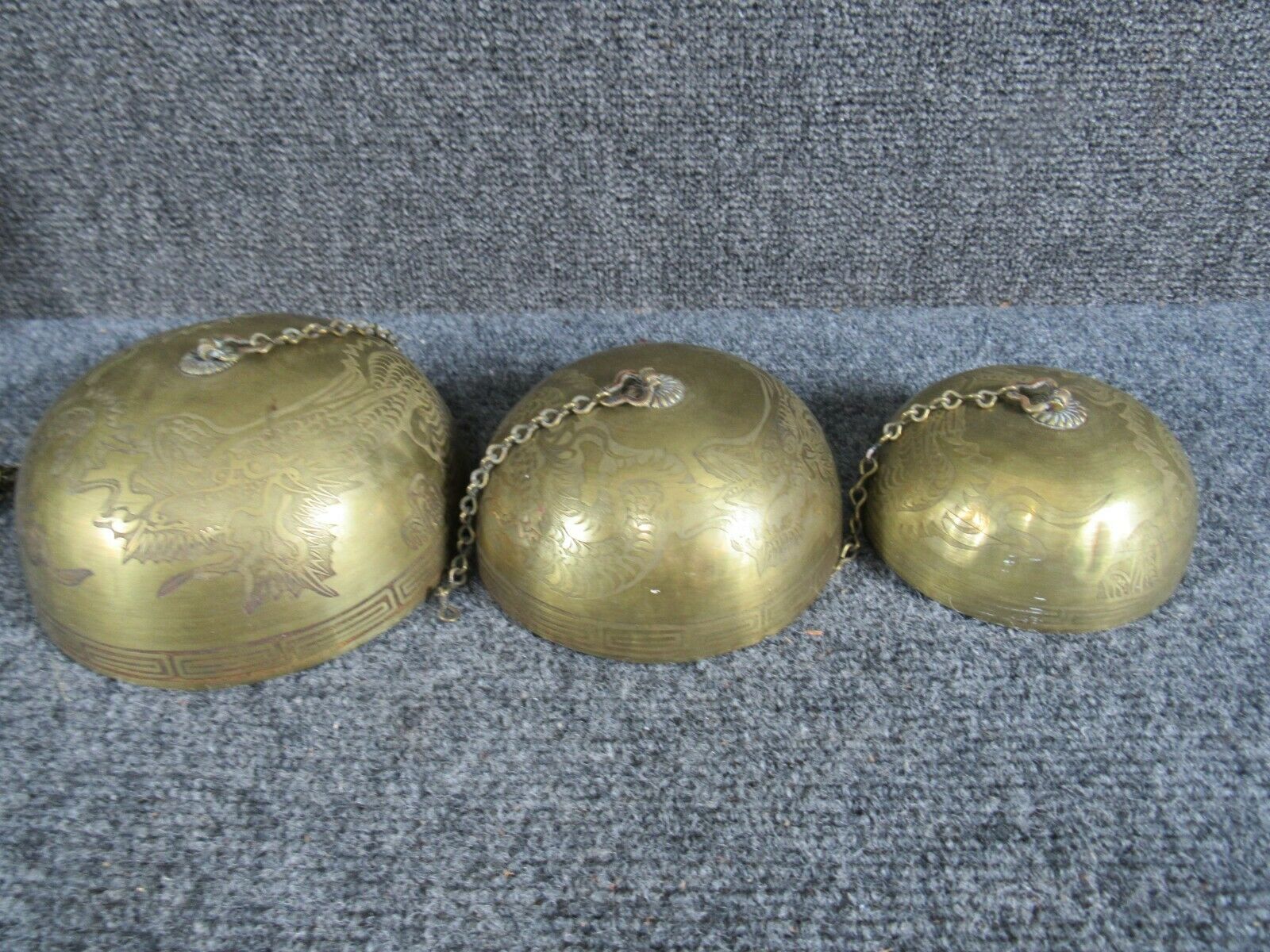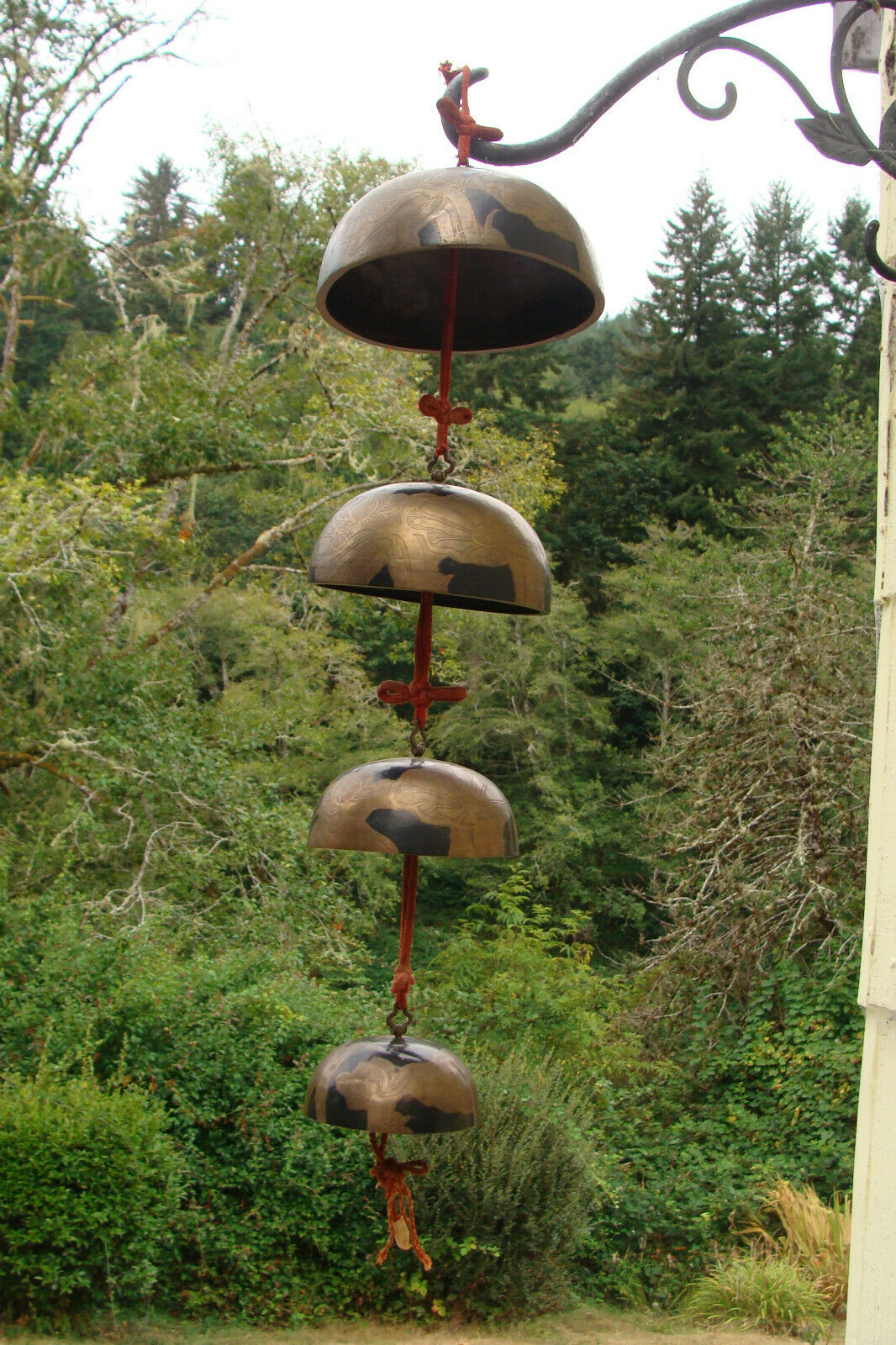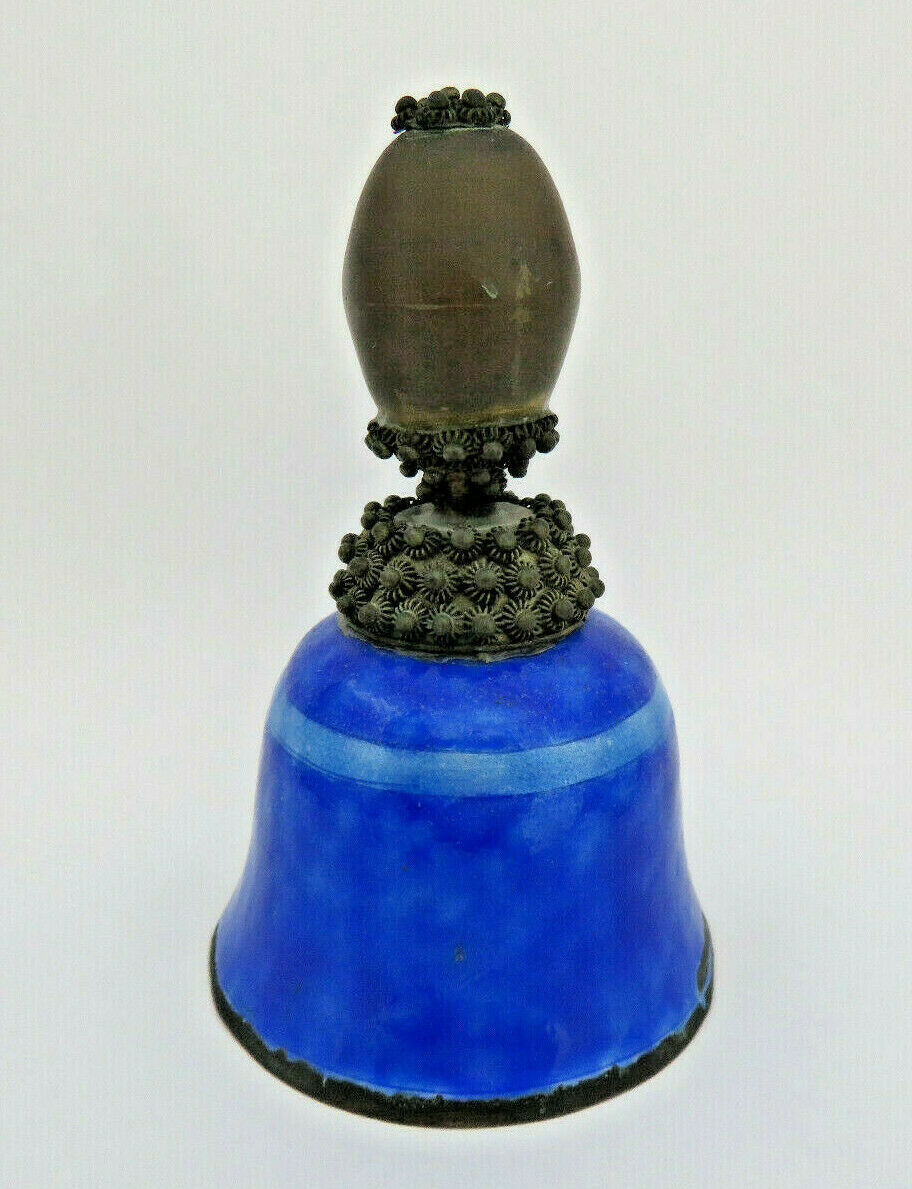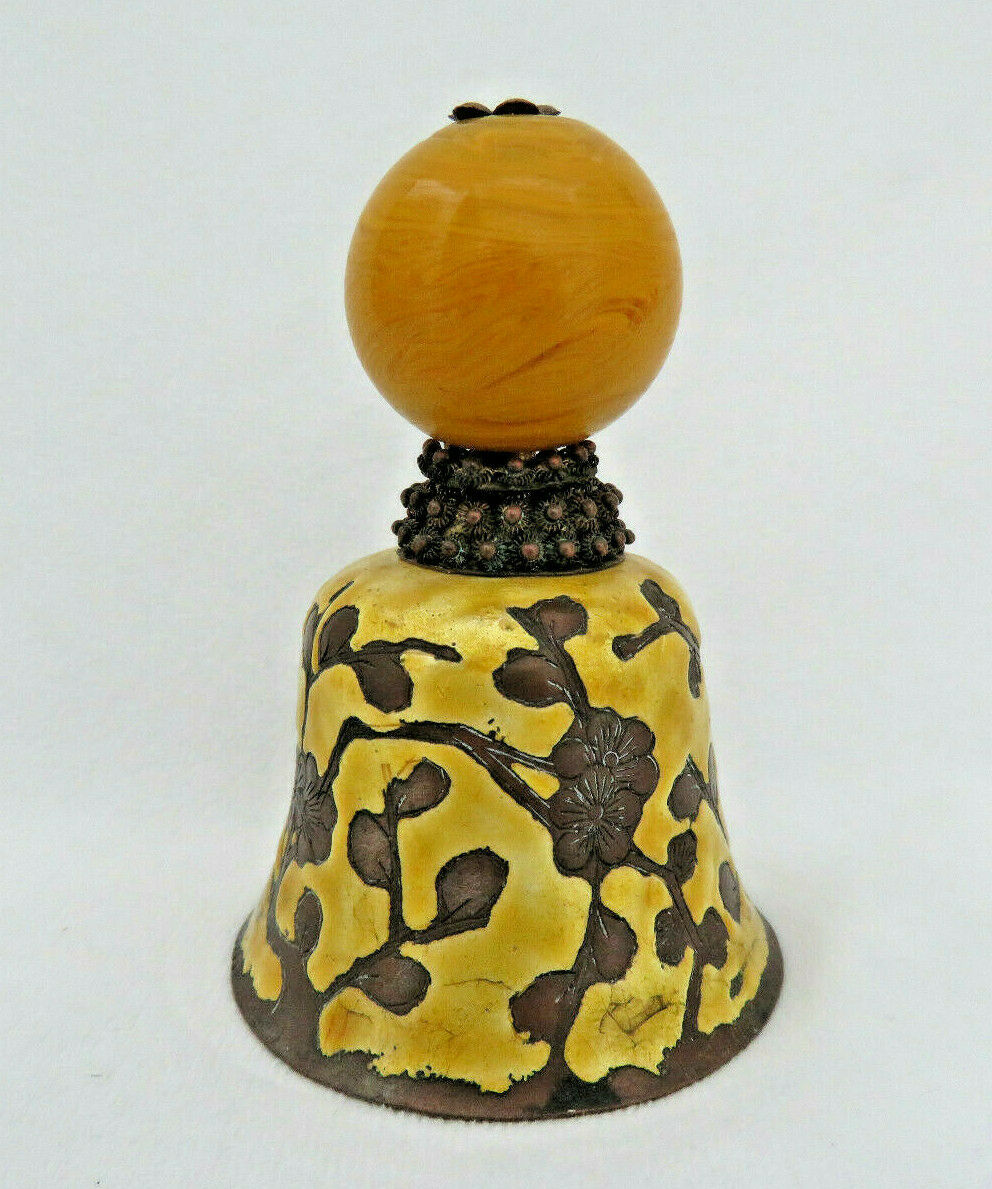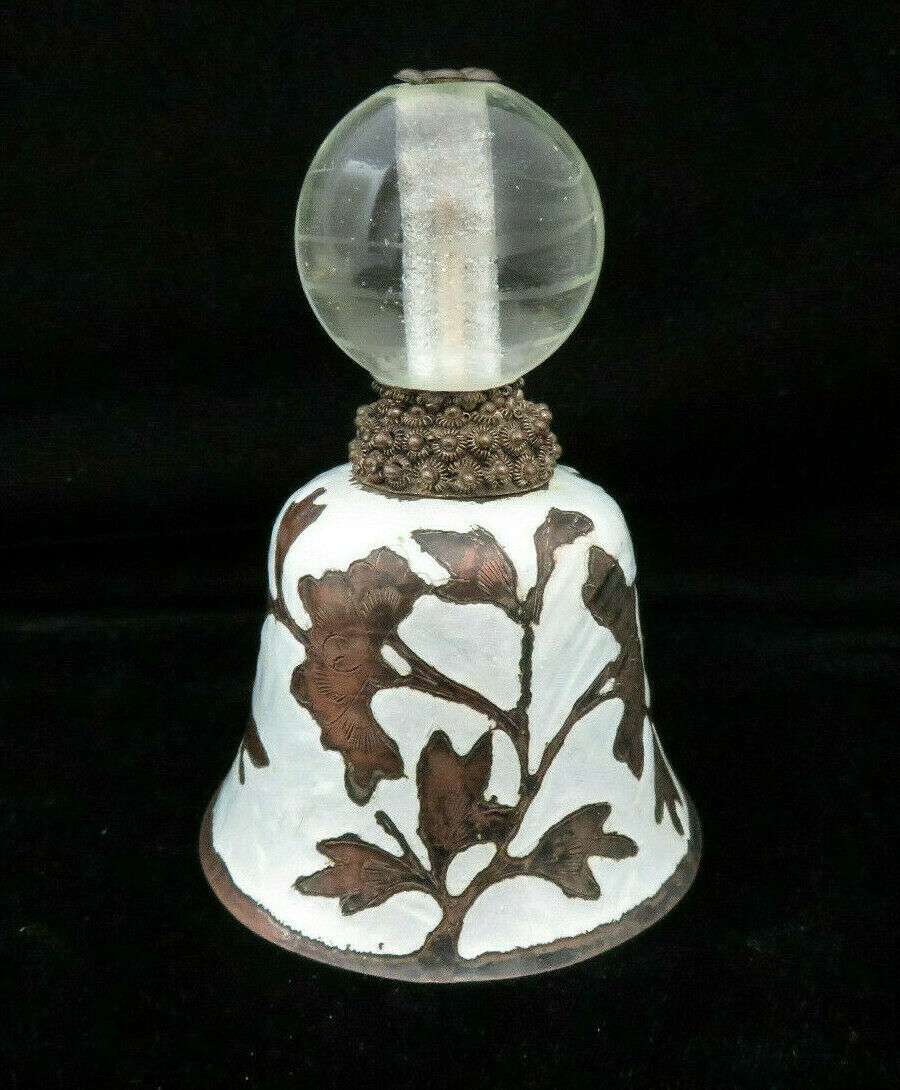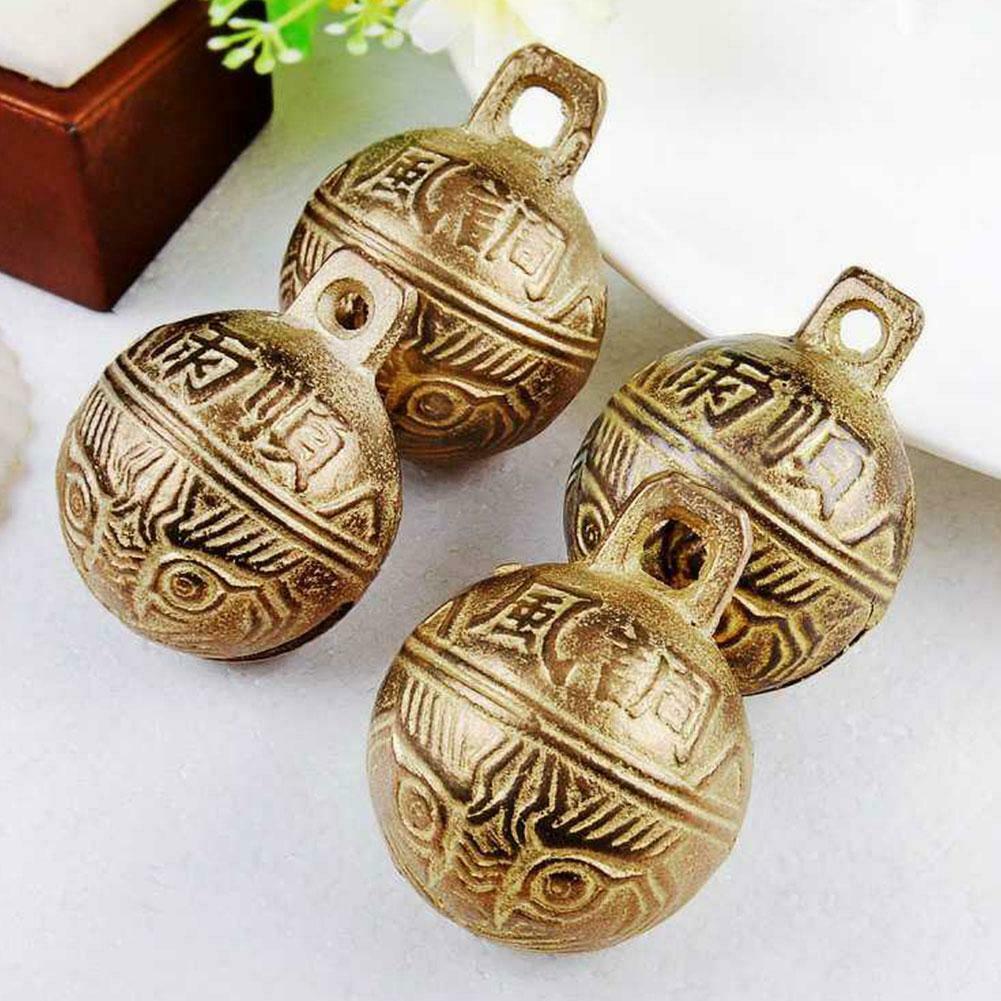-40%
Ancient Chinese Bronze Bells. Graduated Set of 7! c. W. Zhou Dynasty 1100-770 BC
$ 3960
- Description
- Size Guide
Description
Ancient CivilizationsAntiques, Artifacts & Fine Collectibles
Ancient Chinese Bronze Bells (
Niu
Zhong
)
Seven Graduated Musical Bells (
Bian-Zhong
)
Western Zhou Dynasty
c.
10
th
Century BC
This set of seven, ancient, Chinese clapper-less bronze bells, which were sounded with wooden mallets, are about 3,000 years-old.
In Chinese, they are members of the
zhong
family of clapper-less bells
and were hand cast in a graduated set with different pitches.
As a set, they are called
bianzhong
in Chinese and are made of cast bronze. They date to approximately the famous Western Zhou Dynasty 1122 BC—770 BC.
This very early set of graduated, bronze bells was cast about 3,000 years ago without decoration and the sides are smooth with a beautiful patina of blue and green bronze oxidation from being buried in the damp soil for about 3,000 years!
Estimated Price at Auction:
,000--,000!
DETAILS
Each of these 7 ancient Chinese bells is cast in bronze and all share these facts:
1.
They all are about 2.4 mm (.09”) in thickness;
2.
The top suspension loop measures about 24 mm (.95”) tall;
3.
The flat top of each of the bells has an arched, oblong aperture suspension loop that would have been used to support each bell on an elevated rack or stand.
4.
They are inscribed in Seal Script on both the inside and outside of each bell.
The largest bell measures, without the suspension loop, about 80 mm (3.15”) tall, while the smallest bell is just 43 mm (1.7”) tall.
In the Zhou Dynasty, bronze bells emerged as musical instruments for rituals, celebrations, and performances held by the aristocracy.
Bronze production was strictly for the upper class in ancient China, and bronze was only for the aristocracy and imperial use.
The famous, cast bronze
zhong
(
鐘
) bell, is classified as a suspended, clapper-less bell.
Zhong
were normally cast in sets of six, seven, eight or more to form a musical scale, and they were played in the company of both string, drum, and wind instruments.
The mouth of the bell is shaped in the form of a flattened ellipse and each one was skillfully and precisely cast so that it would produce two different pitches, depending on where the musician struck the side with his wooden mallet.
Thus, this set of seven bells would have been able to have produced 14 different pitches.
When struck lightly in the center with a wooden mallet, the largest bell in this set appears to have a perfect pitch of “F” according to my Korg AT-2 Chromatic.
Amazing!!
Each of the seven bells appear to have ancient Chinese characters called Seal Script (in Chinese (Ku’wen) cast on the front side of the bell.
However, the oxidation has obscured the fine lines of each character to such an extent that I am unable to translate them. Research suggests that these characters may have indicated the bell’s musical pitch.
My unscientific testing of this historical set of 7 bells confirms, that each bronze bell was designed to produce two specific tones; this is known because inscriptions were often cast into the bronze naming the bell's tones.
Once a bell was cast its tone could not be changed or adjusted. What remains a mystery for scholars is how ancient Chinese metalsmiths could cast these instruments with such precision so early in history.
Bronze Bells in Ancient China
The Chinese Bronze Age was established by 1700 B.C.E. in the northern region that was the base of the Shang dynasty's base. Bronze objects were typically used in ancient China for state ceremonies and rituals venerating ancestors.
These bells had a special purpose, one that links ritual to the arts in ancient China. They were cast as a graduated set of bells of varying tones and sizes that would have been struck with mallets to create music. (Bells of this scale would not be produced in Europe for another millennium.) The music created by such bells was an integral part of Chinese ritual life, used to create bonds of connection between the living and the dead, the listeners and their rulers.
Scholars have learned a great deal about music making in ancient China from archaeological research. One spectacular discovery in 1977 was the tomb of Marquis Yi of Zeng, the ruler of a small Chinese state in the 5th century B.C.E. and a patron of music. Over one hundred instruments were preserved in his tomb, including a massive set of sixty-five bells in a separate burial chamber. As this burial site indicates, music was so important that instruments were set up to accompany the deceased in the afterlife.
From the Western Zhou Dynasty to the Spring and Autumn Period and the Warring States Period, musical bells shaped like combined pairs of tiles appeared in many areas of the country. The mouth of such a bell faced down, as it was struck more easily when it was in a suspended position.
Yongzhong
,
niuzhong
and small
bo
bells shaped like combined pairs of tiles appeared in chimes or groups. Many of them bore inscriptions of events or were dedicated to a family or person. The bells were thought to communicate
The court of the Zhou Dynasty promulgated the ritual and musical institutions embodied by bells and musical stones, suited to the hierarchy. As a musical instrument of the aristocracy, the bell deviated from its original nature and displayed a symbolic function. The suspending pattern and number of bells and musical stones demonstrated one's position and power.
Bronze in Ancient China
I obtained this graduated set of seven bells directly from a dealer in Hong Kong and I Guarantee them to be 100% original and authentic.
They have a wonderful, old, greenish patina (from the malachite in the surrounding soil) and a fabulous bright blue patina (from the azurite in the soil) that is typical of bronze that has been buried for over 2,500 years.
Close examination with a microscope under natural and black light reveal it to be 100% authentic.
Please look at the photos yourself and you will see the authentic details of these 3,000 year-old bells.
Museums and modern archeological studies usually use the general term “copper alloy” instead of just the term “bronze” to describe these ancient treasures, as many other elements (such as tin, lead, zinc, iron, and even arsenic) were added to the copper to form different strengths of types of bronze items.
Ancient bronze artifacts such as these bells are probably about 80% copper and 20% tin, while modern bronze is closer to 88% copper and 12% tin.
These bells have a beautiful, old patina with heavy signs of oxidation from the two main elements (tin and copper) that make up these exquisite ritual bells.
One interesting property of bronze is that once it has oxidized superficially, a copper oxide layer is formed on the surface and essentially protects the object from further damaging corrosion.
This protective layer turns in another compound, called copper carbonate for you scientists, that protects most bronze pieces from even corrosive saltwater.
I have carefully examined these bells under magnification and they show authentic and original signs of weathering and ground contact that help to further authenticate it as an ancient piece.
I
Guarantee
these bells to be 100% authentic or your money back!
You will not be disappointed!
It is exceeding rare and museum quality ancient Chinese work of art.
Each bell has a wonderful old, patina that is absolutely fabulous: a greenish patina from the malachite in the surrounding soil, some dark red patina from the cupite in the soil, and a bright blue color that is from the azurite in the soil.
This combination of colors forms a fantastic patina that is typical of bronze that has been buried for over 2,000 years.
Close examination with a microscope under natural and black light reveal it to be 100% authentic and cast by hand in a sand
mold
.
In China, similar large sets of bronze bells can be seen on display that the National Museum of China and the
Shanghai Museum.
In the United States, a larger set of Zhong Bells is on display at the Virginia Museum of Fine Arts (VMFA).
I hate to sell these as they are currently in my personal collection, but economic times are tough and I must do so. They are a wonderful 7-piece set and would look great displayed next to your other fine ancient Chinese jade and bronze pieces!
REFERENCES
A
Treasury of Archaeological Bells
, Nathaniel Spear, Jr.
Museum of Chinese History, Beijing
·
National Museum of China
·
Shanghai Museum
·
The Ancestral Landscape
, David N. Knightley, 2000
·
The Great Bronze Age of China
, edited by Wen Fong, MET, 1980
·
Imperial Tombs of China
, 1995
·
British Museum, Jessica Rawson
·
Smithsonian Museum, Sackler & Freer Gallery, WDC
·
Virginia Museum of Fine Arts (VMFA)
·
MET, New York City, NY, USA
